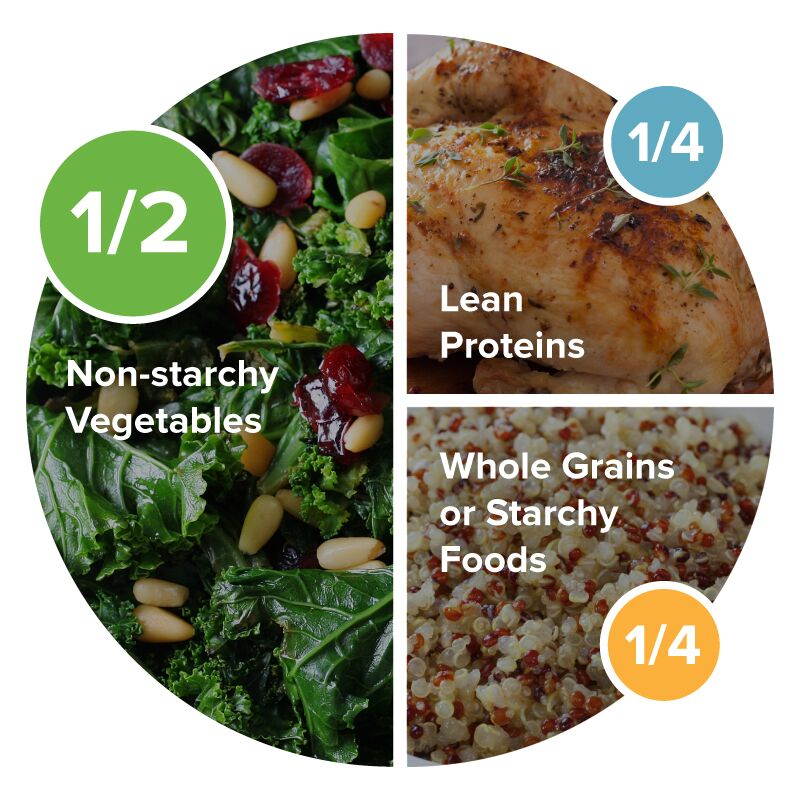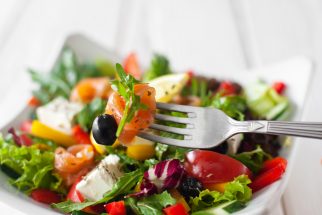
Take the guesswork out of preparing a nutritious, balanced and satisfying meal with this 3-step guide to building a healthy plate.
1. Start with non-starchy veggies
Fill half of your plate with non-starchy veggies, such as leafy greens, Brussels sprouts, broccoli, green beans and peppers. These types of veggies are naturally low in calories and sugar and are rich in fiber. By simply filling half of your dinner plate with non-starchy veggies, you can easily meet half of your daily veggie target, which is 3 cups per day for men and 2 ½ cups per day for women. Remember, frozen veggies like broccoli, green beans and spinach are just as good for you as fresh, so keep a few bags of them on hand as backup.
2. Fill a quarter of your plate with lean protein
Make the next quarter of your plate protein foods, such as chicken, lean meats like pork or beef tenderloin, fish, eggs — and even lentils and beans, which can also double as starches. Protein foods vary in calories, but are low in sugar. Leaner meats like those listed above will have fewer calories, as they don’t contain much fat.

3. Fill up to a quarter of your plate with whole grains or starchy foods
Grains and starchy foods vary in calories, fat, sugar and fiber, but they are all higher in carbohydrates. Healthy grains and starchy foods include brown rice, quinoa, whole wheat pasta and barley, baked or mashed potatoes (with the skin) as well as roasted or boiled turnips and butternut squash.
In addition to these foods, you can also have a serving of dairy — such as 1 cup of low-fat milk or 6 ounces of plain low-fat yogurt or 1 ounce of cheese — which gives you additional vitamins minerals and protein. Dairy foods vary in fat and calories, and some products, such as yogurt, are commonly sweetened with sugar. Try to choose dairy foods that contain little-to-no added sugar and that are lower in fat.
A serving of fruit — like ½ cup of berries, a small apple, banana or orange — also makes a great dessert. Compared to sweets, fruit is fairly low in calories, has no added sugar (just natural sugar) and is loaded with vitamins, minerals, fiber and water.

